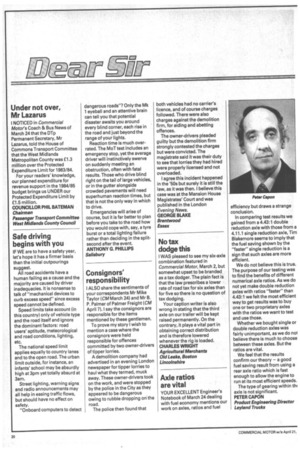Axle ratios are vital
Page 22

If you've noticed an error in this article please click here to report it so we can fix it.
YOUR EXCELLENT Engineer's Notebook of March 24 dealing with fuel economy mentions our work on axles, ratios and fuel efficiency but draws a strange conclusion.
In comparing test results we gained from a 4.43:1 double reduction axle with those from a 4.11.1 single reduction axle, Tim Blakemore seems to imply that the fuel saving shown by the "faster" single reduction is a sign that such axles are more efficient.
We do not believe this is true. The purpose of our testing was to find the benefits of different numerical axle ratios. As we do not yet make double reduction axles with ratios "faster" than 4.43:1 we felt the most efficient way to get results was to buy one or two proprietary axles with the ratios we want to test and use those.
Whether we bought single or double reduction axles was fairly unimportant, as we do no1 believe there is much to choose between these axles. But the ratios are vital.
We feel that the results confirm our theory — a good fuel saving result from using a rear axle ratio which is fast enough to allow the engine to run at its most efficient speeds.
The type of gearing within thq axle is not significant.
PETER CAPON Product Engineering Director Leyland Trucks




















































































